- Learning time
- 60 minutes
- First play time
- 120 minutes
Viticulture
Designed by: Alan Stone,Jamey Stegmaier
In Viticulture* the players represent vintners competing to make and sell their product. If the description sounds even less snappy than the name, don’t be fooled: the competition here is fierce, and the game is complex.
Players each take the pieces of a chosen colour and also have their own smaller board in front of them representing their winery. At the start of the game everyone gets some bits and bobs as a kind of starter kit. Everyone will have workers; but there’ll be other stuff available like money or buildings too. More on those in a bit. A bigger central board shows the actions available to players (or not available, if someone gets there first!)
Play is broken up into years and each year broken into seasons. Spring is where turn order is worked out – going earlier is good, as you get first choice on the actions. But going later in turn order gets more rewarding bonuses.
The left half of the central board shows the actions for summer: this is the time you plant vines, build buildings (which allow you to grow the more valuable grapes, or give other bonuses) or give tours of the winery to raise a bit of cash.
Autumn (or Fall, to use the games nomenclature) is merely collecting a visitor cards and winter – the right half of the board – is when you harvest grapes, crush them into wine (red, white, or mix them for blush or sparkling), and complete orders for the market. Both summer and winter rounds allow you to play visitor cards, which bring all manner of benefits to your winery.
At the end of each year grapes in your crushers and cellars mature – increasing in value – and you get residual payments for any orders completed.
So the heart of the game is actually very simple – you’re putting workers on the board and getting the resulting action from it. You’re harvesting grapes to generate wine and complete orders, which get you both victory points and money. But around that give-and-return mechanic is a multitude of things to consider. First, there are limited spaces for each action, (and only one space in each action has a delicious bonus on it, for the first person to go there) so turn order is very significant. Second, the visitor cards (yellow for summer, blue for winter) can mix things up a lot – each one has a simple explanation on it but in essence they give you rewards and occasionally punish your opponents too.
Thirdly when you build your buildings (which cost money) can be crucial. You need a trellis for some vines and a water tower for others, but there are other buildings too: the cottage that generates more money when you give a tour, the windmill that gives you a victory point whenever you plant a vine. You’ll also need to expand your cellars before you can store the pricier wines. Finally all players have a grande worker. The grande is the one worker who can go to an action space that is already full, so when and how you use him is critical to your chances of success.
Viticulture offers a multitude of strategies as to how you go about it. The game is a race to 20 points and when any one player reaches that figure the current year is played to the end, and the scores are compared.
*We have described the Viticulture: Essential Edition here. The second edition is simpler and the first edition doesn’t have the grande workers in it.
The guru's verdict
-
Take That!
Take That!
It's not right up there on the Take That list, but there is a tension about the game in that available spots on the board are very limited. Some of the visitor cards can be a little aggressive, and clever players may spot which action you're after and decide to block you.
-
Fidget Factor!
Fidget Factor!
Viticulture isn't a game for young 'uns, and old 'uns should probably use any downtime to formulate a plan. Be aware too that - in our experience at least - most of Viticulture's scoring comes in the final third of the game, where things speed up dramatically, going from sedate to marginally panicked.
-
Brain Burn!
Brain Burn!
Moderate to heavy, depending on how good you are at forward planning and chaining actions in your head. We've played it and shot ourselves in the foot, for sure.
-
Again Again!
Again Again!
The only chance element in Viticulture is what resources you start with - which should balance out anyhow - and how the visitor cards fall. But within the game's parameters is an enormous amount of variety. We've rated this a 4 complexity because it takes a while to get your head around it, but subsequent plays will see that sense of bewilderment drop substantially, and players who like an intricate, complex game will enjoy Viticulture a lot (play time will also drop - to less than an hour for a two-player game).

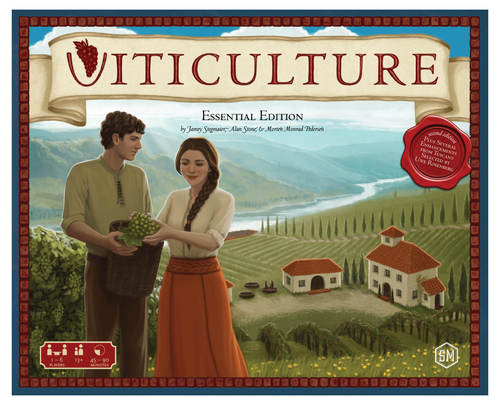
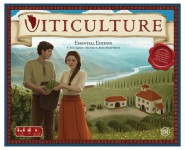
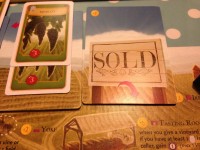
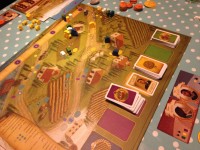
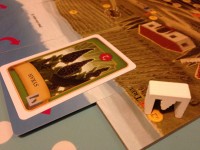

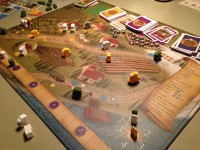


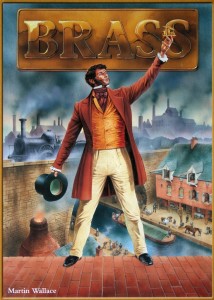

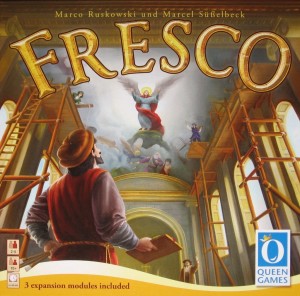
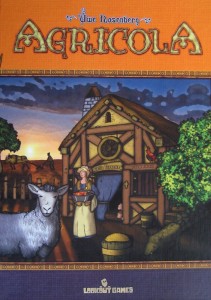
Sam says
My first play of Viticulture was an unmitigated disaster from a point-scoring point of view, but I was enamoured of it all the same. And a second play only made me appreciate it more! There's a lot going on, and establishing how to get everything working smoothly is the challenge. The Visitor cards vary greatly in terms of effectiveness and circumstance, so if you're after a 100% pure strategy game that eliminates chance entirely, this probably isn't it. If you're similarly intrigued but maybe want something less daunting, then Fresco has similarities, but with a simpler paint-mixing challenge that is easier to get your head around.